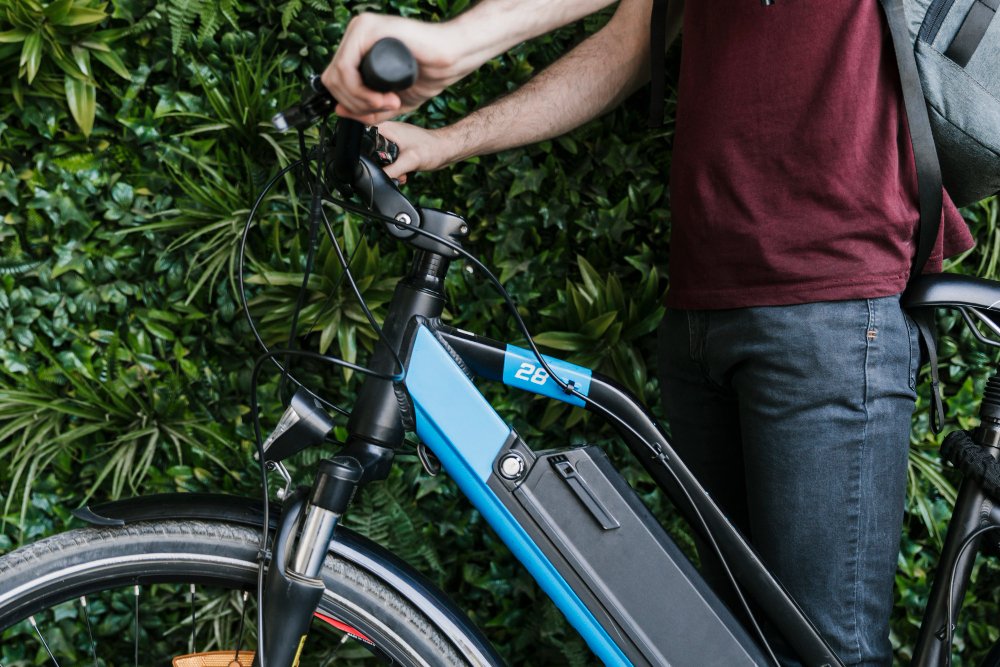The Tech that Goes Into Ebikes: An Overview
- 1 The Tech Specifications of Ebikes
- 1.1 1. Battery Technology: The Heart of an E-bike
- 1.2 2. Motor Types: Brushed vs. Brushless
- 1.3 3. Regenerative Braking Systems
- 1.4 4. Smart Integration: Connectivity Features
- 1.5 5. Frame and Suspension Technology
- 1.6 6. Drivetrain Mechanics
- 1.7 7. Lighting and Safety Features
- 1.8 8. Advanced Control Systems
- 1.9 9. Tires and Wheels
- 1.10 10. Environmental Impact and Sustainability
- 2 Conclusion
E-bikes have surged in popularity, transforming urban commutes and leisure rides with their blend of convenience and technology. Understanding the technology behind these innovative machines becomes essential as more individuals turn to e-bikes for their transportation and recreation needs. This article dives into the various technological components that make e-bikes a reliable and efficient choice, exploring everything from battery technology to advanced control systems. Whether you’re a casual rider or a tech enthusiast, this guide will enhance your appreciation of the intricate engineering that powers e-bikes.
The rise of e-bikes represents more than just an alternative mode of transport; it marks a significant shift in how we approach mobility. As environmental concerns become more pressing and cities become more congested, e-bikes offer a sustainable solution that marries the benefits of physical biking with the ease of motorized transport. This blend of technology and practicality makes e-bikes appealing in today’s fast-paced world. In the following sections, we’ll break down the critical technological innovations driving the e-bike revolution, shedding light on how these features enhance the riding experience and meet the demands of various environments and users.
The Tech Specifications of Ebikes
1. Battery Technology: The Heart of an E-bike
Every e-bike’s core is its battery, which dictates range, power, and performance. Modern e-bikes typically utilize lithium-ion batteries due to their high energy density and longevity. These batteries are lighter than their predecessors and rechargeable, making them ideal for sustained use over long distances. Advances in battery technology continue to push the boundaries of how far and fast e-bikes can go, empowering riders to explore further confidently.
2. Motor Types: Brushed vs. Brushless
E-bike motors come in two main types: brushed and brushless. Brushless motors are favoured for their efficiency and low maintenance. This efficiency is particularly beneficial in all-terrain electric bikes, as it offers plenty of options for riders seeking performance across varied landscapes. These motors provide smoother acceleration and responsiveness, enhancing the riding experience on city streets or rugged trails.
3. Regenerative Braking Systems
Regenerative braking is a remarkable feature that distinguishes advanced e-bikes. This system recovers energy typically lost during braking and redirects it back to the battery, extending the bike’s range. Particularly useful in urban settings where stopping and starting occur frequently, regenerative braking maximises efficiency and contributes to the sustainability of e-biking as a green mode of transport.
4. Smart Integration: Connectivity Features
Integrating intelligent technology into e-bikes transforms how riders interact with their machines. GPS tracking, theft protection, and real-time diagnostics via smartphone apps are becoming standard. These features not only enhance security but also provide a more connected and informed riding experience. Riders can monitor everything from battery levels to maintenance needs, ensuring their e-bike is always ready for the next adventure.
5. Frame and Suspension Technology
The design of an e-bike’s frame and its suspension system play a crucial role in comfort and performance, especially when navigating through challenging terrains. Carbon fibre and aluminium alloy are commonly used for their strength and lightweight properties, allowing agility and speed. Suspension systems, whether front, complete or none, are tailored to the e-bike’s riding and are designed to provide necessary shock absorption and stability across diverse environments.
6. Drivetrain Mechanics
The drivetrain of an e-bike, comprising the gears and chain system, is fundamental in translating motor power into movement. Advanced e-bikes feature electronic gear shifting, enhancing the smoothness and precision of transitions between gears. This technology improves the overall riding experience and reduces wear and tear on the bike’s mechanical components, ensuring longevity and reliability, whether tackling steep hills or accelerating on flat terrain.
7. Lighting and Safety Features
Safety is paramount in e-bike design, and modern e-bikes are equipped with sophisticated lighting systems that ensure visibility during all times of the day. Integrated LED lights, brake lights, and turn signals are essential for rider safety and to comply with road safety regulations. These features and electronic horn systems and reflectors make e-bikes safer for day and night riding, enhancing rider confidence and road presence.
8. Advanced Control Systems
Control systems in e-bikes include displays and controllers that allow riders to customize their riding experience. These systems provide essential information such as speed, battery level, and distance travelled, allowing riders to adjust motor assistance levels. Some high-end models feature touchscreen displays with intuitive interfaces that make navigating various functions seamless and straightforward.
9. Tires and Wheels
The tyres and wheels of an e-bike play a significant role in determining the bike’s suitability for different terrains and conditions. For all-terrain models, tyres are designed to offer enhanced grip and puncture resistance, suitable for both rugged trails and smooth pavements. Wheel sizes vary, influencing the bike’s handling dynamics. Larger wheels maintain momentum better and offer a smoother ride over bumps, while smaller wheels accelerate more quickly and are easier to manoeuvre.
10. Environmental Impact and Sustainability
E-bikes represent a leap toward more sustainable transportation methods. Using electric power, e-bikes reduce reliance on fossil fuels and emit no direct pollutants, contributing to cleaner air and lower carbon footprints. Furthermore, advancements in battery recycling and more energy-efficient production practices continue to enhance the environmental benefits of e-biking, aligning with global sustainability goals.
Conclusion
The technology that goes into e-bikes is complex and fascinating, blending mechanics, electronics, and software to create versatile, efficient, and enjoyable transportation solutions. As this technology evolves, the potential for e-bikes to transform mobility and contribute to environmental sustainability grows. Whether for commuting, recreation, or sport, the modern e-bike offers a compelling blend of innovation and performance, promising an exciting future for riders and the planet. By staying informed about these technological advancements, enthusiasts and new users can make the most of what e-bikes offer, ensuring a safer, more efficient, and enjoyable ride every time.




















